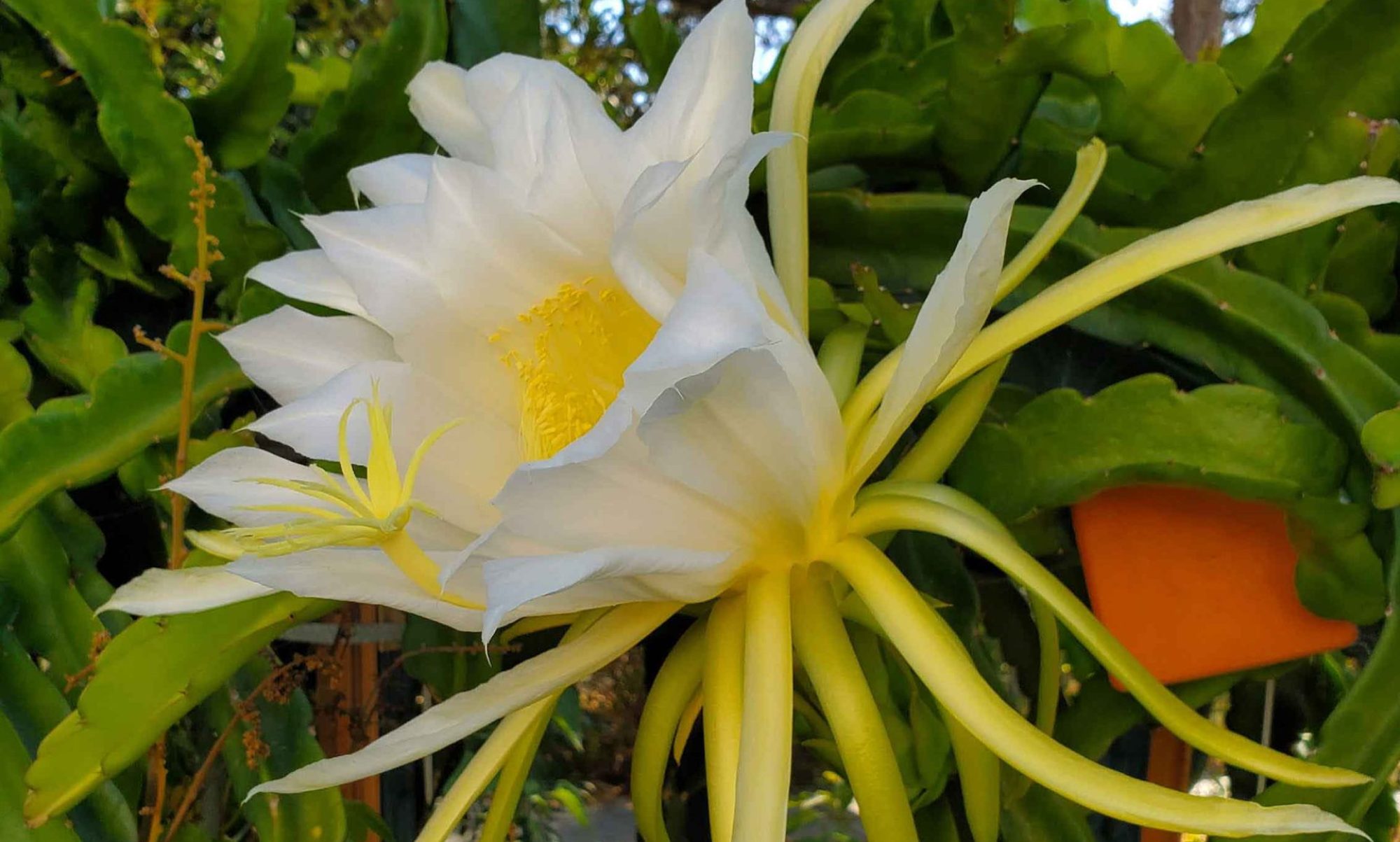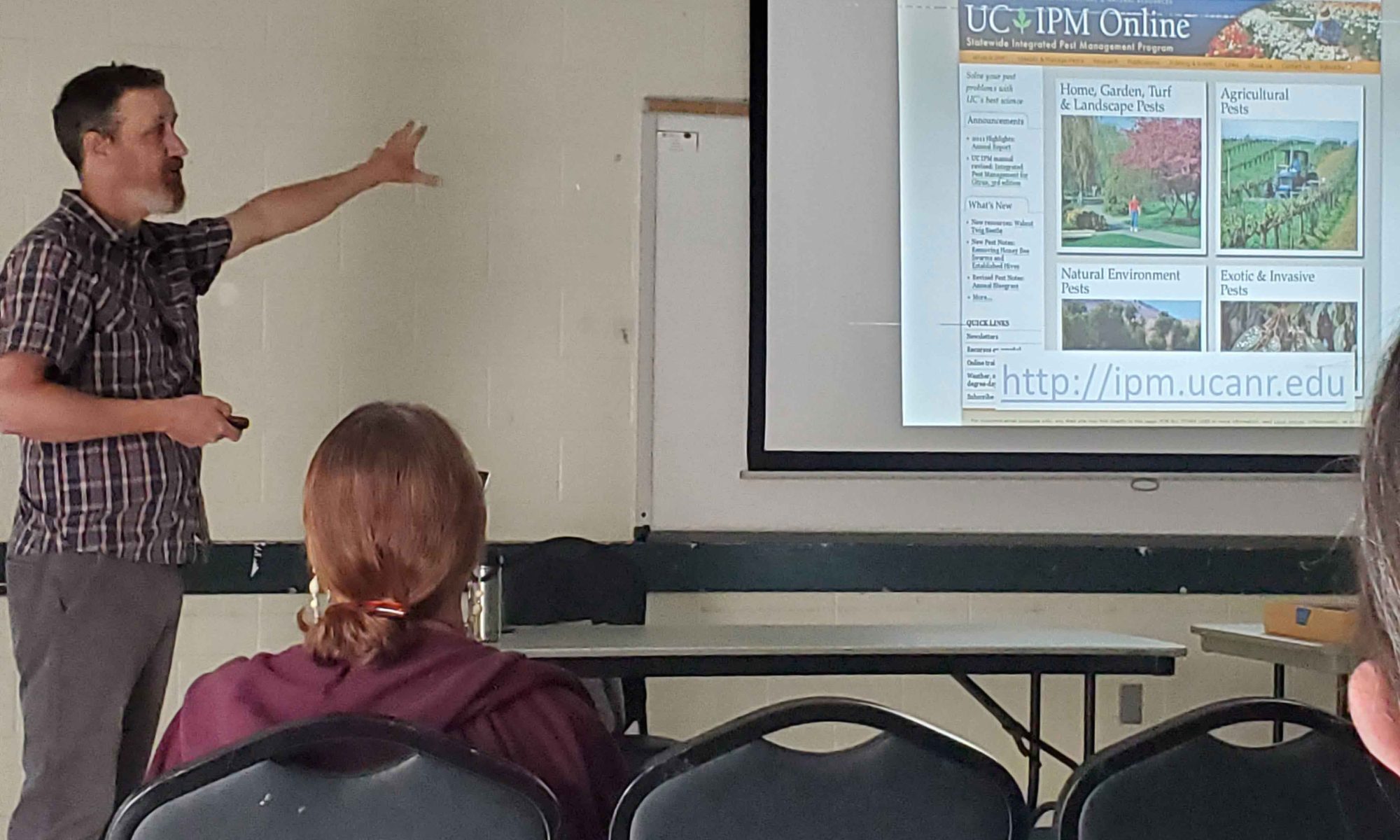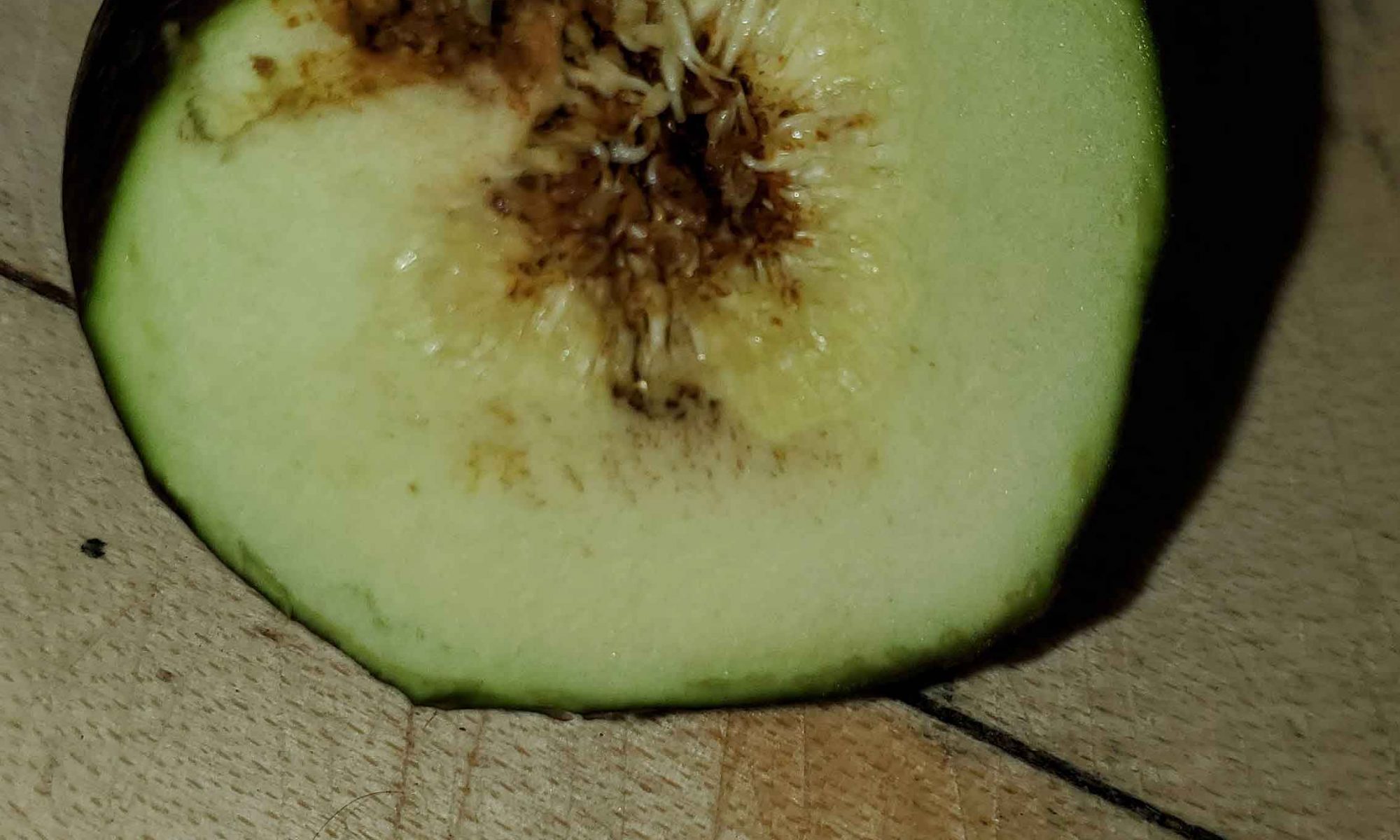Today’s talk on Backyard Bugs was enjoyed by a large number of West LA and LA Chapter members. Matt Daugherty gave us a crash course in Entomology and then went into the specifics of how we can deal with the pesty (and protect the non-pesty) bugs. He highly recommended becoming familiar with the UC Riverside Integrated Pest Management site that uses a multi pronged and more holistic approach to managing our orchards.
Matt focused especially on the Asian Citrus Psyllid which is the known transmitter of the huanglongbing (or Citrus Greening) disease in citrus. This disease has totally decimated the Florida and Brazilian citrus industry but fortunately hit California late enough for protective measures to be put in place quickly. Aggressive monitoring and removal of infected trees has thus far kept the disease (but not the psyllids!) contained. We all have a responsibility to honor the guidelines about not sharing scion wood or buying citrus trees from anything but certified nurseries. After all, the disease was first found in a multi-grafted backyard tree.
One of the easiest (hah) things, Matt mentioned we could do was control ants in our yards, since the ants vigorously farm many disease causing insects, including the Asian Citrus psyllids.
Most of us are dealing with the tiny but widespread Argentine ants, so the ant bait sold at nurseries, Home Depot, etc is too strong to attract them. An easy home brew involves mixing 1 cup hot water with 1/2 cup of white sugar. When it has dissolved, mix in very slightly less than 1/2 tsp of boric acid or 2/3 tsp borax (yes, the 20 Mule Team Borax over your washer). Let it sit for several hours then mix again before using. You can put the bait in small glass jars with an ant sized hole poked in the lid or plastic containers like hummus comes in with a hole poked in the side. It’s easier if the containers are clear so you can see when they are filled with ants. Throw in some cotton balls so the ants have something to sit on while they drink. You don’t want them to die there (though some inevitably will drown) but rather bring the bait back to their nests and — hopefully — kill the queen. Please don’t leave the bait uncovered because bees (and small children) will also be attracted to its sweetness. Good bye bad bugs!


